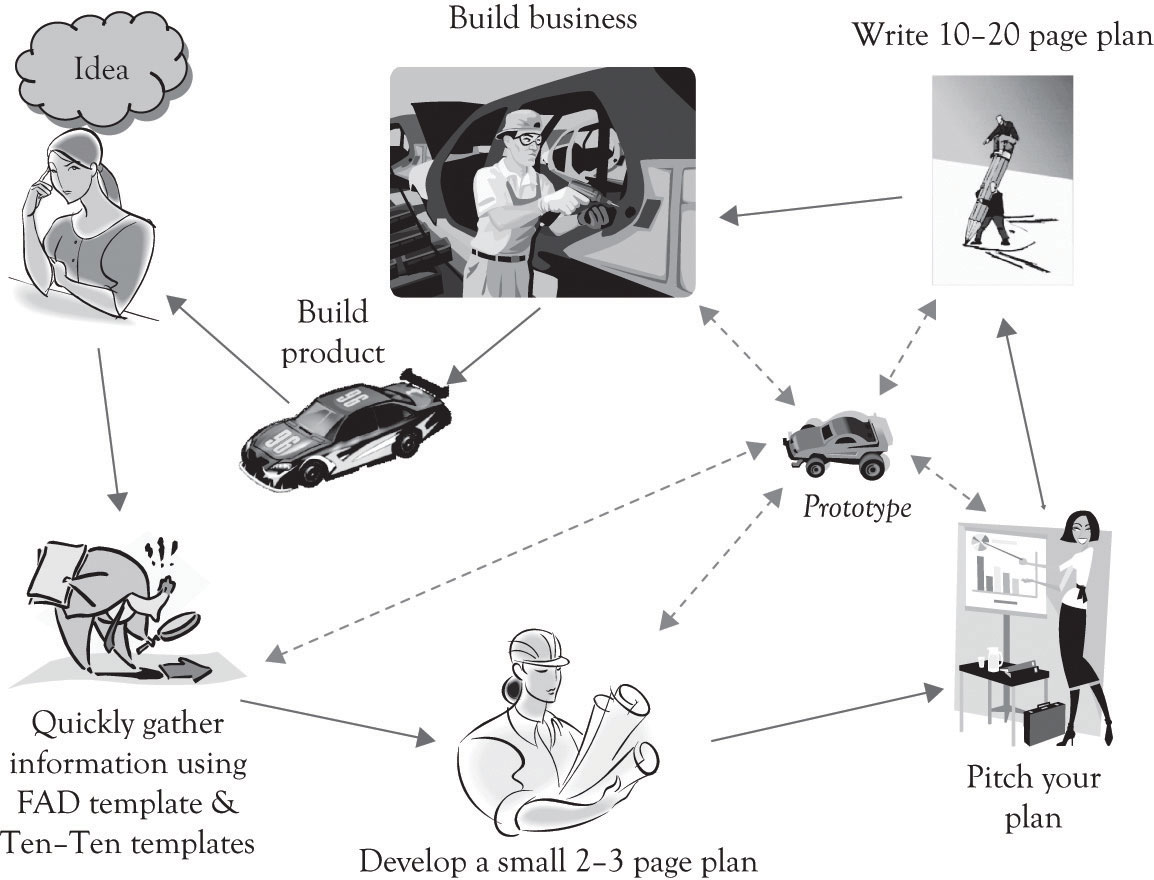This is “Conclusion”, section 12.13 from the book Creating Services and Products (v. 1.0). For details on it (including licensing), click here.
For more information on the source of this book, or why it is available for free, please see the project's home page. You can browse or download additional books there. To download a .zip file containing this book to use offline, simply click here.
12.13 Conclusion
In this chapter, we have illustrated the process and the elements that are used to develop a full-blown business plan. The key points are the following:
- The FAD template, the Organizational and Industry Analysis template, the Business Plan Overview template and executive summary are used as the basis for developing the full-blown business plan.
- The business plan serves many purposes including serving as a communication tool for investors; it is a scaled-down version of how the business will function and it is used as a platform for communications among the founders, employees, consultants, and mentors; and finally, it can be used as a blueprint for operating the business the first year.
- A business plan template is presented that illustrates the typical sections that are contained in the business plan.
- The writing style, the organization and the formatting are just as important as the content for communicating the essence of the business model.
- It is important to pitch and present the business plan before finalizing the full-blown plan. This will help to bring focus and clarity on the emergent business.
- In many instances, investors invest in the management as much as in the idea.
- Many investors are interested in market potential in terms of the growth of the market and the total size of the market.
- Contingency planning and risk assessment should be addressed in the business plan or at least informally among the founders of the business and key management employees.
- Time, hard work, and attention to details will lead to better business plans.
- Legal counsel and accounting expertise are essential for incorporating the business and providing guidance through the legal and financial systems.
The business plan is presented to the outside world through a business presentation and the presentation leads to the development of a short business plan document. An important part of developing the business plan is the learning-by-doing process. It is important that the emerging company make and build things, try experiments, and construct prototypes. Prototypes need to be constructed as early as possible for tangible products and also for systems applications. As illustrated in Figure 12.3 "Planning Process Is Ongoing an Iterative", the process is iterative and ends only after the business is not in existence.
Figure 12.3 Planning Process Is Ongoing an Iterative

The most important element of the business plan and the business presentation is the “look and feel.” The plan and the presentation should look clean and streamlined. The development of a business model and plan begins with the moment that the entrepreneur has the original aha experience; this is followed with a very brief strategic planning process (we recommend the Ten–Ten approach coupled with a FAD analysis) and this is in turn followed by the development of the executive summary.




